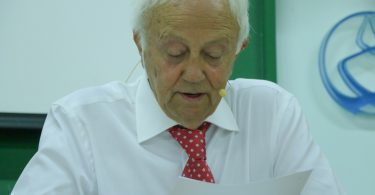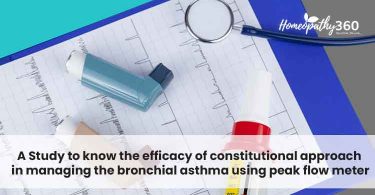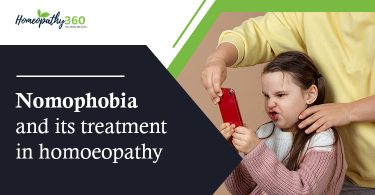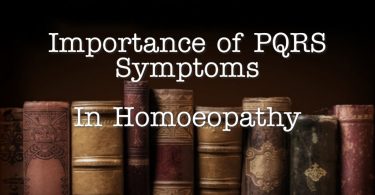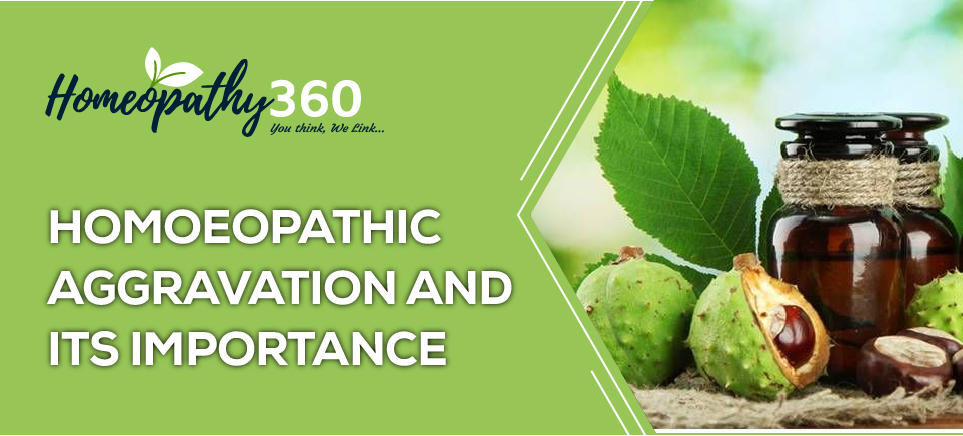
ABSTRACT: Homoeopathic aggravation is a part of homoeopathic treatment. Cure is seldom possible without the knowledge of homoeopathic aggravation. This knowledge helps us to understand the accuracy in choosing medicine, it’s doses and also in finding the path of repetition of doses.
KEYWORDS: Homoeopathy, homoeopathic aggravation, Organon of Medicine.
ABBREVIATIONS: § – aphorism, F.N. – footnote.
INTRODUCTION:
Knowledge of diseases alongside knowledge of homoeopathic aggravation gives us complete insight to differentiate between disease aggravation and homoeopathic aggravation. Homoeopathic aggravation is the intensification of existing individualistic symptoms after taking the similar remedy (either partial or most similar, i.e. simillimum) suitable to an individual.
Patient’s welfare is our sole aim. Physician must be alert to the issue that whether the patient is improving or worsening after taking medicine. A logical judgment on the basis of clinical assessment, interrogation, patient statement and change or alteration in symptoms in patient after taking medicine indicates the progression of disease and also action of medicine administered. It becomes important for us to determine what effect the medicine imparts on a sick individual and how to interpret the same in a patient prognosis. Thus to assess prognostic value, we must concentrate on effect of medicine in a sick individual and the role of vital force in the development of recovery.¹
Vital force in homoeopathic aggravation:
Vital force is deranged in natural disease. After administering medicine, due to primary action of medicine, vital force is under “natural disease” and “medicinal disease”. Here the natural disease and medicinal disease coexist initially. Medicinal disease is stronger because “medicine acts at all times, under all circumstances, on every living human being” (§32) and “we have the regulation of the dose in our own power” (§30).²,³
The stronger “medicinal disease” annihilates the “natural disease”, if it is a similar medicine or it makes a complex disease of natural and medicinal diseases, if it is a dissimilar medicine.²
In the next phase the vital force reacts against primary action of medicine. Depending upon the nature of medicine, dissimilar (antipathic) or similar (homoeopathic), secondary action is of two types respectively. They are:
i) Secondary counter action (when an exact opposite state of primary action is present in nature). Here opposite condition of primary action is seen.
or
ii) Secondary curative action (when an exact opposite state of primary action is not present in nature). Here vital force differentiates or free itself from the changes done by medicine and establish the normal healthy state (§64).²
Cure occurs through application of similar medicine.²
Reaction of vital force after medicine intake:
There can be several types of alteration in symptoms in patient after taking medicine during treatment due to the action of medicine on vital force. These are:
- Aggravation of symptoms.
- Amelioration of symptoms.
- Partial or complete disappearance of symptoms.
Aggravation may occur from aggravation of disease condition which indicates that disease state is going stronger and patient is becoming weaker and strength of vital force is decreasing.¹,⁴,⁵
Aggravation of symptoms (the individual symptoms of patient) also may occur where patient feels better. This indicates that the vital force is being set in order but individual symptoms show aggravation.¹,⁴,⁵
About Homoeopathic aggravation:
“Homoeopathic aggravation” is the intensification of existing individualistic symptoms due to the dual effect of “medicinal disease” over “natural disease” during primary action of medicine after taking the similar remedy (either partial or most similar, i.e, simillimum) suitable to an individual (§157, §158).²
In acute diseases with recent origin, it occurs immediately after ingestion of medicine for the first hour or for a few hours (dose is sufficiently small) or for a considerable number of hours (larger dose) depending upon the dose (§161).²
In chronic disease however it takes few days like 6 – 10 days to occur (§161), as action of medicine is proportionately long lasting in chronic diseases and expires quickly in acute diseases (most quickly in most acute) (§161F.N).²
One can easily understand whether the treatment results in cure of the patient or not by understanding the effect of the prescribed medicine in the sick individual, which can be deduced through the changes in the symptoms (of disease and of individual). Thus, homoeopathic aggravation gives an indication of prognosis of the patient during course of treatment.
Alteration of symptoms in patients and their interpretation can be summarised as follows:
1. Smaller the crudity of medicine (i.e higher potency), deeper is the curative action and milder and shorter is the aggravation (§159).²,⁴
2. Slight aggravation during first hours in acute diseases indicates remedy is very similar and repetition hardly necessary (§158).²
3. Acute diseases of long standing or remained untreated for long or of severe forms or at verge of death, actually have developed pathological changes in vital organs or systems and so severe aggravation, great prostration, violent sweating, vomiting, purging, exhaustion may occur.⁴
This phenomenon is a reaction of the vital force to set itself in order and is a good indication towards recovery. Physician must not be confused and should not readily change medicine or antidote. Intensity of aggravation could be controlled by less repetition and proper selection of potency with utmost caution.⁴
4. No aggravation in a strong constitution may indicate the remedy to be partial similar. The case may need in successions few more partial similar medicines to reach cure (§162-167).²,⁴
5. Prolonged aggravation may occur from very low potencies and also from over repetition of doses. These should be corrected.⁴
6. With predominant physical complaints, patient might get aggravation in physical symptoms but may experience improvement in mind, emotion and energy levels.⁶
7. With severe mental or emotional diseases patient will get aggravation in mental and emotional symptoms but his physical generals like appetite, sleep may improve. Physician should be cautious about repetition here.⁶
8. In remittent fever aggravation may occur in few hours whereas in severe continued fever like typhoid, aggravation occurs in few days and so more repetition is needed in severe forms.⁴
9. In very severe and grave patients never repeat medicine so long aggravation continues.⁴
10. Prolong aggravation and final decline of the patient (Kent’s 1st observation) – Alarming. Disease is incurable, medicine is too deep antipsoric, destruction established – use moderate to low potency like 30 or 200, observe aggravation and repeat very cautiously. Antidote in wrong course of disease.⁴
11. Long aggravation but final and slow improvement (Kent’s 2nd observation) – There is hope to recovery though there is beginning of marked tissue change in some organ.⁴
12. Aggravation is quick, short and strong with rapid improvement of the patient (Kent’s 3rd observation) – Structural change is absent or superficial. Recovery is sure.⁴
13. No aggravation whatever (Kent’s 4th observation) – Two conditions-
i) In acute diseases if cure occur, aggravation is not perceptible because simillimum and exact potency is selected.
ii) In chronic diseases, changes in nerves happened. Cure may occur but with sharp sufferings and potency is exact.⁴
14. Using LM potencies this aggravation can be controlled very easily with flexible control of dose and repetition.⁶
Master Hahnemann states that homoeopathic aggravation indicates: (§280) –
- An approaching cure.
- That vital principle no longer needs to be affected by the similar medicinal disease in order to lose the sensation of the natural disease.
- That the life principle now free from the natural disease begins to suffer only something of the medicinal disease hitherto known as homoeopathic aggravation.²
Examples of homoeopathic aggravation— given by Master Hahnemann:-
- Veratrum album in a case of colicodynia shows violent aggravation before it cures-due to large dose (Lesser Writings of Hahnemann).⁷
- Viola tricolor cured the facial eruption with initial aggravation of eruption (Leroy’s observation)- due to large dose (§161F.N).²
- Skin diseases cured by elm bark are primarily aggravated by it (Lysons’s observation) – due to large dose (§161F.N).²
- A drop of Sulphur 90 in a case of an epileptic lady caused an epileptic fit within 1 hour (Lesser Writings of Hahnemann).⁷
- When a patient is suffering from itch, complains of increase of the eruption after Sulphur, physician who know not the cause of this consoles him with the assurance that the itch must first comes out properly before it can be cured; he knows not, however, that this is a Sulphur eruption, that assumes the appearance of an increase of the itch. (§161F.N).²
References:-
1. Roberts HA. The Principles and Art of Cure by Homoeopathy. 3rd ed. New Delhi: B Jain Pub Pvt Ltd; 2013.
2. Hahnemann S. Organon of medicine. 6th ed. New Delhi: B Jain Pub Pvt Ltd; 2004.
3. Dudgeon RE. Lectures on the Theory & Practice of Homoeopathy. New Delhi: B Jain Pub Pvt Ltd; 2015.
4. Kent JT. Lectures on homoeopathic philosophy. New Delhi: B Jain Pub Pvt Ltd; 2002.
5. Kent JT. Kent’s minor writings on homoeopathy. New Delhi: B Jain Pub Pvt Ltd; 1988.
6. DeSchepper L. Hahnemann Revisited. Santa Fe, NM: Full of Life Pub.; 2001.
7. Hahnemann S, Dudgeon RE. Lesser writings of Samuel Hahnemann. New Delhi: Indian Books & Periodicals Syndicate; 1983.
About Author:
Dr Pralay Sharma
Deputy Medical Superintendent (I/C), National Institute of Homoeopathy, Kolkata.
Dr Manjeet Singh
Senior Research Fellow (H), Dr. D.P Rastogi Central Research Institute for Homoeopathy
Under Central Council for Research in Homoeopathy
Dr Chandrasekhar Pore
Consultant Homoeopath


